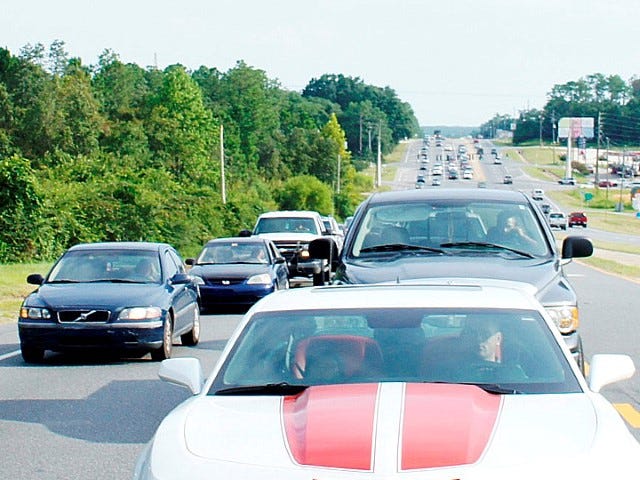
CRESTVIEW — Imagine evening rush-hour traffic flowing smoothly from Cox Bridge to Stillwell Boulevard and beyond.
It's not difficult for Department of Transportation District 1 Secretary Billy Hattaway, who foresees major thoroughfares like State Road 85 with fewer street lights; subdivision design that removes cars from main roads; and more educated drivers.
Rethinking community design is a necessity, said Hattaway, who for two years has led efforts that have reduced Florida’s status as the nation’s former leader in pedestrian deaths.
Post-World-War II town planning — including clusters of unconnected residential developments, each attached to main arteries — forced more vehicles onto already crowded main roads, he said while speaking in Crestview to the Northwest Florida Regional Transportation Planning Organization.
Hattaway’s solution is planning streets that connect developments — with traffic light-protected, mid-block pedestrian crossings and neighborhood businesses — that parallel major arteries.
New state rules require communities to consider roundabouts, also known as “traffic circles,” before installing signals. They allow a continuous vehicle flow through an intersection, rather than halting traffic and allowing it to back up, and reduce intersection fatalities as much as 90 percent, he said.
Rewriting state laws so drivers and law enforcement officers can understand them also is among the DOT's priorities,
Hattaway cited a recent state statute defining a crosswalk as “that part of a roadway at an intersection within the connections of the lateral lines of the sidewalks.” The revised statute now reads, “Pavement markings on the roadway surface … at an intersection used by pedestrians for crossing the roadway.”
Implementing these cultural changes — including narrowing vehicle lanes to create bicycle lanes without using additional pavement — requires shifting from a car-centric mindset, Hattaway said. His department is developing a pedestrian safety action plan, conducting road safety audits, creating guidelines for designing for pedestrian safety, and teaching traffic engineers the initiative’s benefits.
Targeted engineering, driver education through media campaigns and high-visibility enforcement are key components of the plan, Hattaway said.
Email News Bulletin Staff Writer Brian Hughes, follow him on Twitter or call 850-682-6524.
This article originally appeared on Crestview News Bulletin: Rethinking subdivisions, less reliance on cars can improve Crestview traffic
